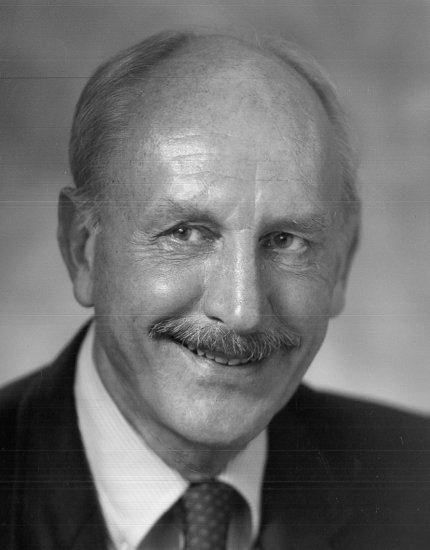Structural Biology Pioneer
NIDDK Scientist Emeritus Davies Mourned

Photo: Brooks Photography
Dr. David Davies, NIDDK scientist emeritus, died Sept. 1 from medical complications following hospitalization. He was 89.
Davies was a founding member of the intramural NIDDK Laboratory of Molecular Biology (LMB) and chief of the lab’s section on molecular structure. His work greatly enhanced biomedical understanding, identifying targets for therapy by uncovering the molecular details of protein and nucleic acid interactions needed for processes that cells undergo.
“David epitomized scientific excellence and collegiality,” said Dr. Michael Krause, NIDDK scientific director and LMB chief at the time of Davies’ retirement. “His genuine excitement about science was infectious and touched everyone fortunate enough to share time with him.”
Davies grew up in Pontardulais, Wales. The first in his family to attend college, he graduated from Oxford University and received a doctorate in 1952. In 1955, he joined NIMH and moved to NIDDK 6 years later. He retired from NIDDK in 2012 after 57 years of federal service and transitioned to an active scientist emeritus.
Among the earliest researchers to characterize nucleotides and important classes of proteins, Davies was closely connected to some of the most important advances on the NIH campus throughout his long and fruitful career, including discovering the first three-stranded helical nucleic acid molecule.
Passionate to foster the next generation of scientists, he recruited and mentored dozens of young scientists who developed successful research careers of their own.
Davies published a brief memoir titled “A Quiet Life with Proteins” in 2004. In it, he observed, “When I came to the NIH in 1955 I never thought that I would stay so long. It was only gradually that I realized what a superb place it is to do research and how many outstanding scientists there are in such a variety of disciplines.”
Davies’ myriad recognitions include election to the National Academy of Sciences in 1978 and receipt of the Stein & Moore Award from the Protein Society in 1998.
“Dr. Davies was a true pioneer in the field of structural biology,” said NIDDK director Dr. Griffin Rodgers. “The scientific community is indebted to both his foundational contributions and integral role in cultivating a world-class research program at the NIH.”
Davies is survived by his wife, Monica, and his two daughters, Helen and Sally Davies.
